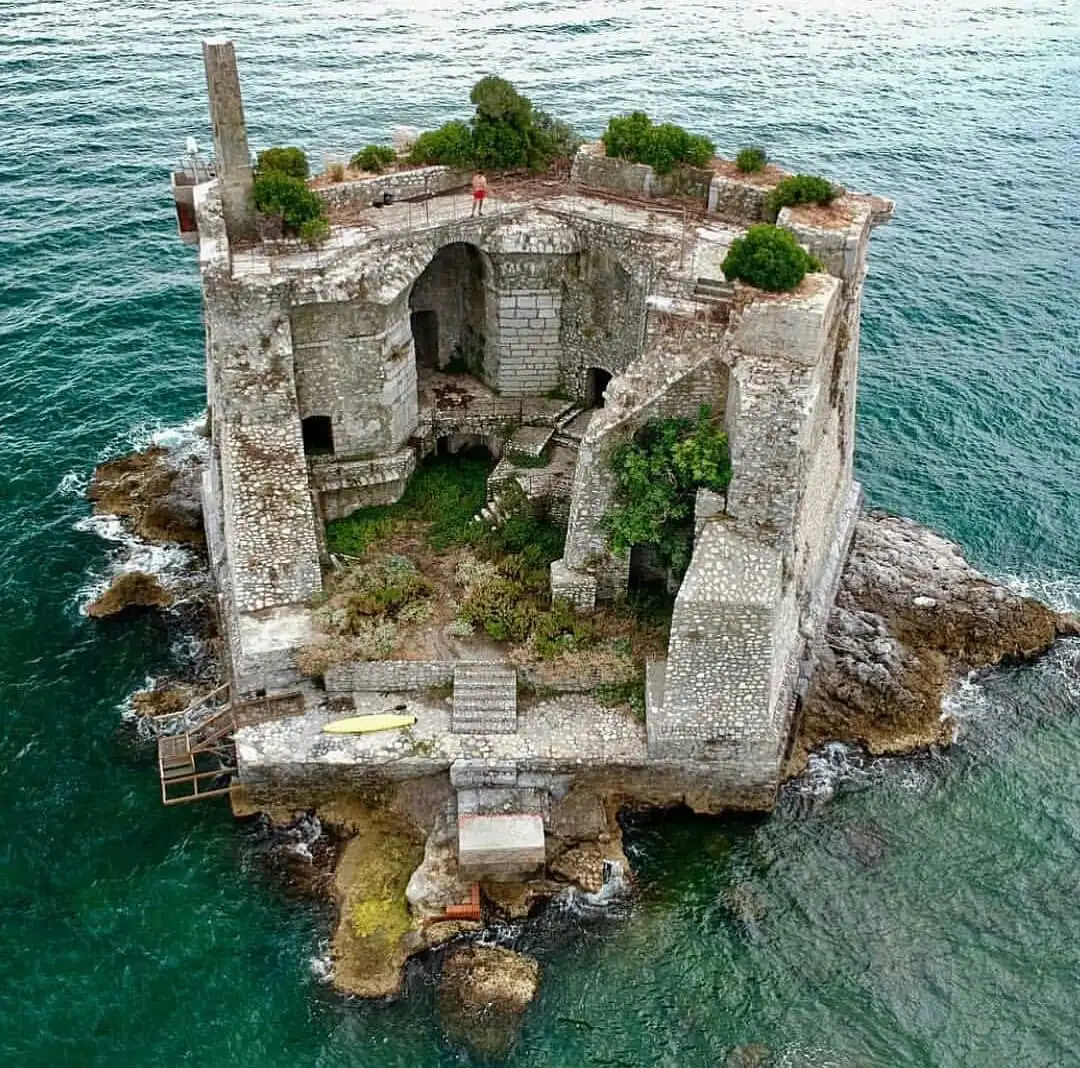The Scola Tower, also known as Torre Scola, is a historical watchtower on a rocky cliff in the Gulf of La Spezia, Italy. It stands as a sentinel over the ancient maritime routes, a testament to the region’s strategic importance. Built in the early 17th century, the tower was part of the defensive system of the Republic of Genoa. It served as a lookout and defensive fortification against pirate attacks and naval assaults. Over the centuries, the tower has withstood battles, weathering, and the passage of time, remaining a symbol of the rich maritime history of the Ligurian coast.
Get your dose of History via Email
Historical Background of Scola Tower
The Scola Tower was constructed in 1606 under the direction of the Republic of Genoa. Its purpose was to defend the Gulf of La Spezia, particularly from the frequent pirate raids. The tower’s strategic position allowed for control over the entrance to the gulf. It was part of a larger network of fortifications that included the nearby towns of Portovenere and Lerici.
Genoese architect Cristoforo Poggiali is credited with the design of the Scola Tower. The structure was built on a pre-existing rock, known as the Scuola rock, which gave the tower its name. The rock itself provided a natural foundation for the fortification. The tower’s construction was a response to the increasing threat of naval attacks during that period.
Throughout its history, the Scola Tower has seen various uses. Initially, it served as a military lookout and defensive structure. Later, it became a lighthouse, guiding ships safely through the treacherous waters of the gulf. The tower has also been the scene of historical events, including a notable siege in 1800 during the War of the Second Coalition, where it was heavily damaged by British naval forces.
After the siege, the tower was partially restored but never regained its former military importance. Over time, it was abandoned and left to the elements. However, the Scola Tower has not been forgotten. It remains an iconic landmark, attracting tourists and history enthusiasts alike. Its silhouette against the backdrop of the Mediterranean Sea continues to captivate the imagination of those who visit the Ligurian coast.
Despite its ruinous state, the Scola Tower stands as a silent witness to the past. It embodies the maritime heritage of the region and serves as a reminder of the once-mighty Republic of Genoa. The tower’s resilience through the centuries is a testament to the skill and craftsmanship of its builders and the enduring strength of its stone construction.
About Scola Tower
The Scola Tower is a robust example of military architecture from the early 17th century. It rises from a rocky islet at the eastern end of the Cinque Terre, near the village of Portovenere. The tower’s design is typical of the period, with a circular shape that maximizes defense capabilities and minimizes blind spots.
Constructed primarily of local stone, the tower’s walls are thick and designed to withstand cannon fire. The stone was likely quarried nearby, reflecting the Genoese practice of using readily available materials. The tower’s base is broader than its top, a feature that adds stability and deflects projectiles.
Architectural highlights of the Scola Tower include its gun ports and the remnants of its garrison quarters. The gun ports, strategically placed around the circumference, allowed defenders to fire upon approaching enemies from multiple angles. Inside, the quarters provided space for the soldiers and officers who manned the tower.
The method of construction involved meticulous stonework, with each piece carefully shaped and fitted together. This craftsmanship has allowed the tower to endure through the centuries, despite the harsh marine environment. The tower’s construction techniques reflect the military engineering knowledge of the time and the importance placed on coastal defense.
Today, the Scola Tower is a ruin, but its structure still conveys the might and purpose it once held. Visitors can observe the weathered stones and imagine the tower in its prime, a formidable guardian of the Gulf of La Spezia. The tower’s presence continues to be a focal point in the landscape, a reminder of the region’s historical significance and the enduring legacy of Genoese fortifications.
Theories and Interpretations
Several theories and interpretations surround the Scola Tower, reflecting its historical significance and the mysteries of its past. Historians have debated its exact role within the Genoese defense system, with some suggesting it was a key strategic point for controlling naval traffic.
The tower’s use as a lighthouse has led to speculation about the extent of its navigational importance. Some believe it played a crucial role in guiding ships through the perilous waters of the gulf, while others argue that its primary function was always military.
Mysteries also linger about the life within the tower. Little is known about the daily routines of the soldiers stationed there. Historians have had to piece together their lives from scant records and the physical evidence left behind in the tower’s ruins.
Regarding historical records, matching the tower to specific events has been a challenge. While the siege of 1800 is well-documented, other episodes in the tower’s history are less clear. Archaeologists and historians continue to study the site, hoping to uncover more details about its storied past.
Dating the tower has been relatively straightforward, thanks to the clear records from the Republic of Genoa. However, the methods used to date the repairs and modifications over the centuries involve a combination of historical documents, architectural analysis, and, in some cases, carbon dating of organic materials found within the mortar.
At a glance
- Country: Italy
- Civilization: Republic of Genoa
- Age: Built in 1606 AD

